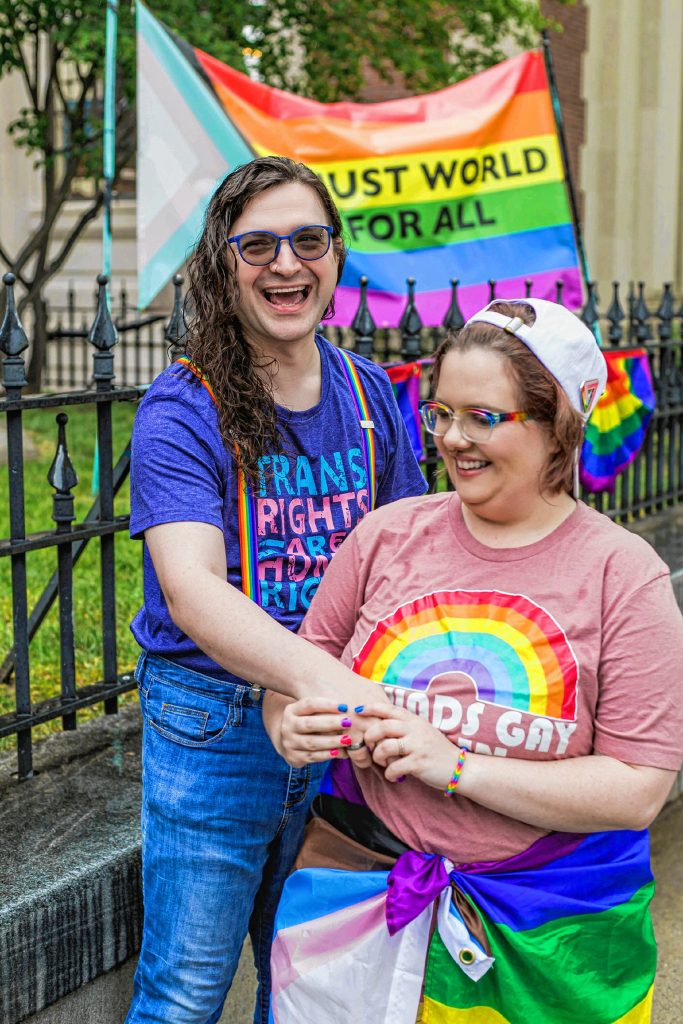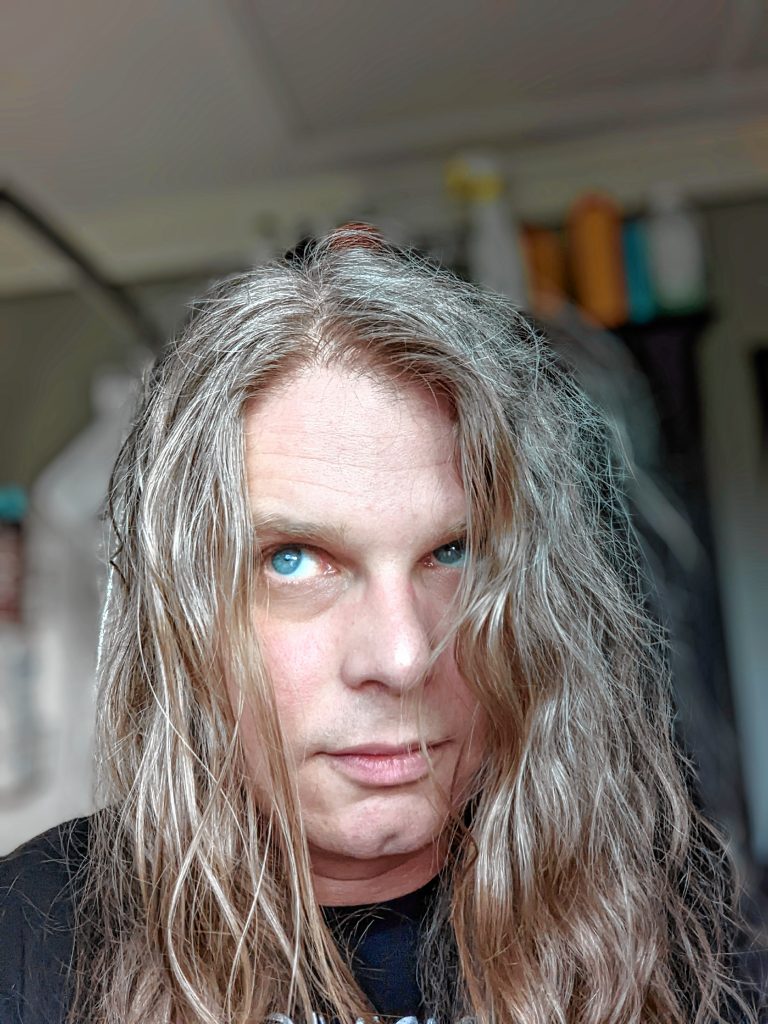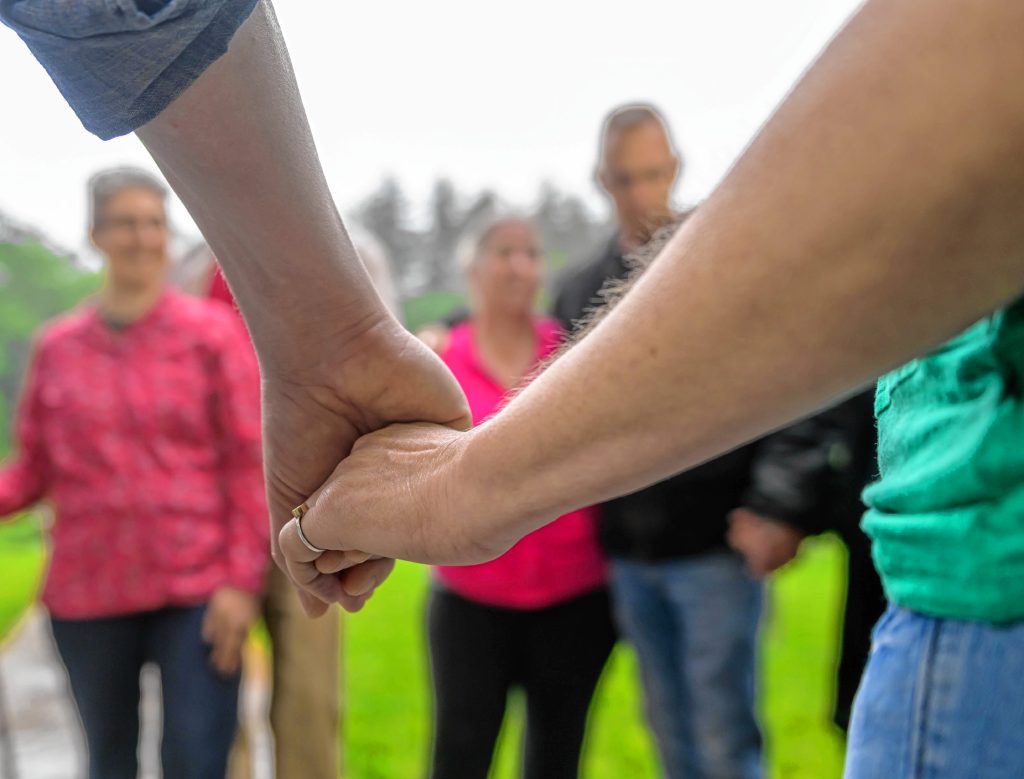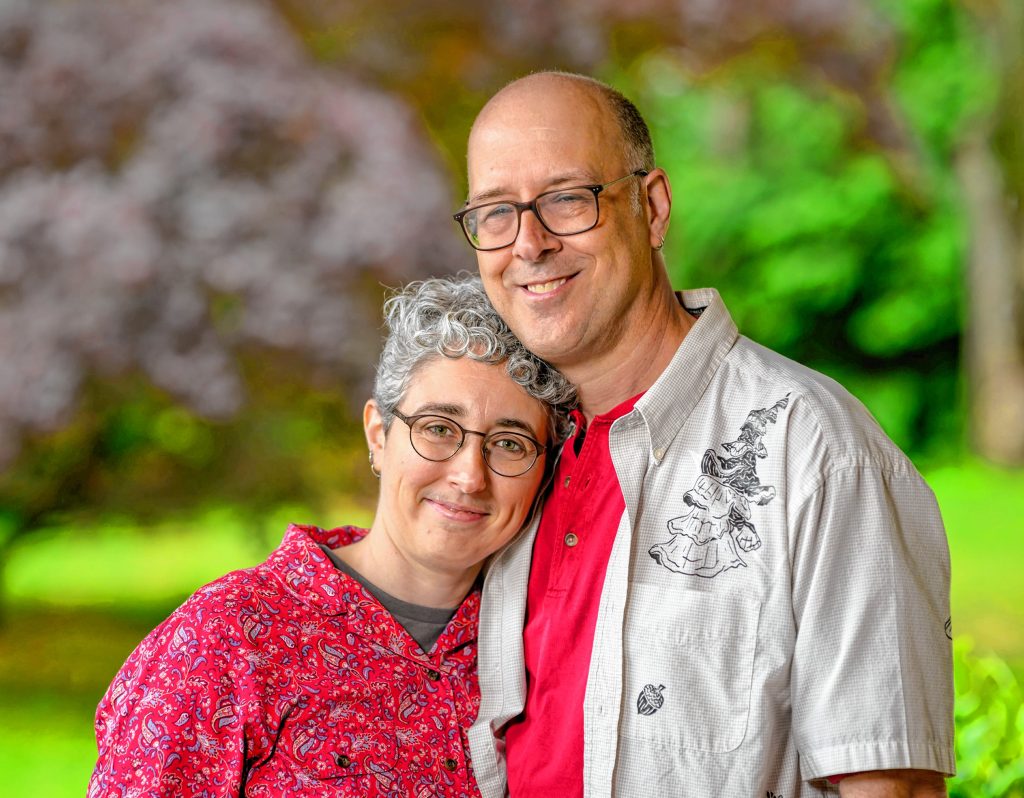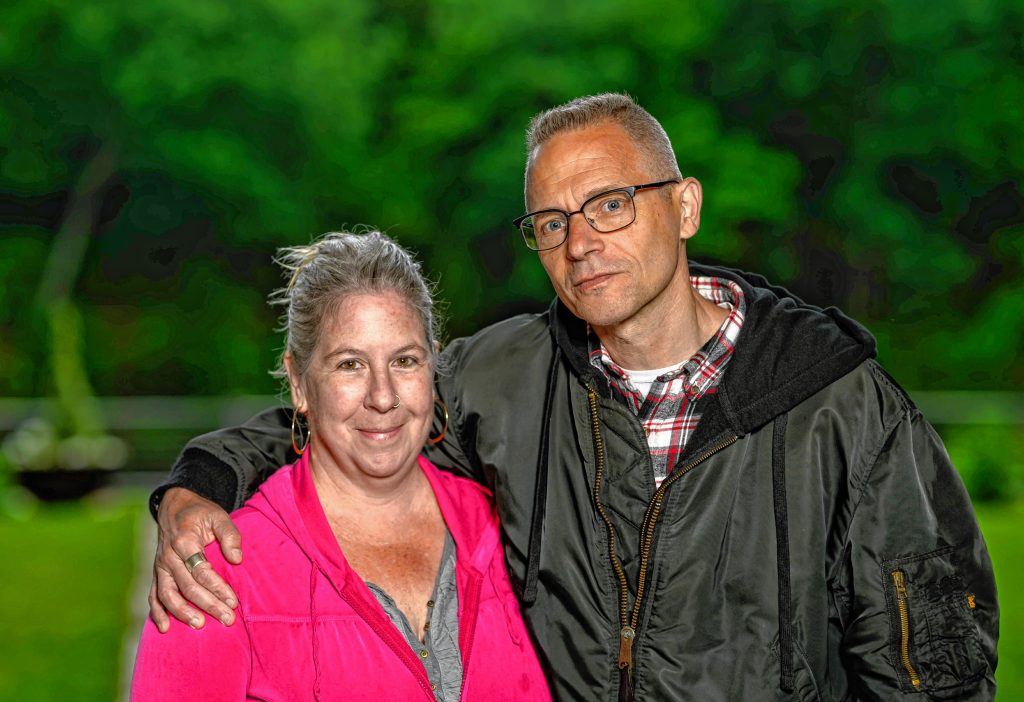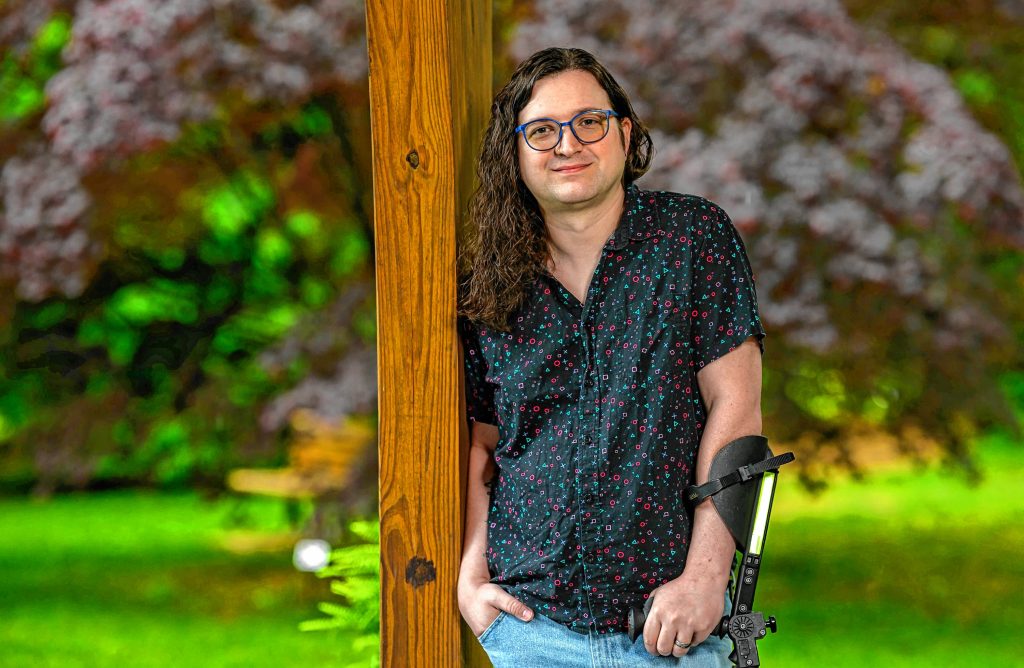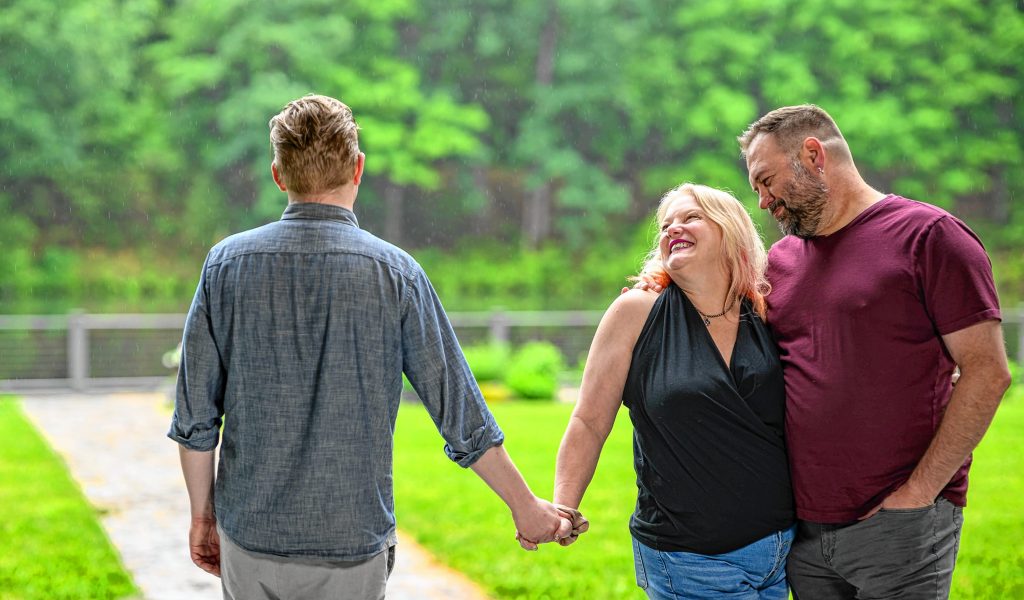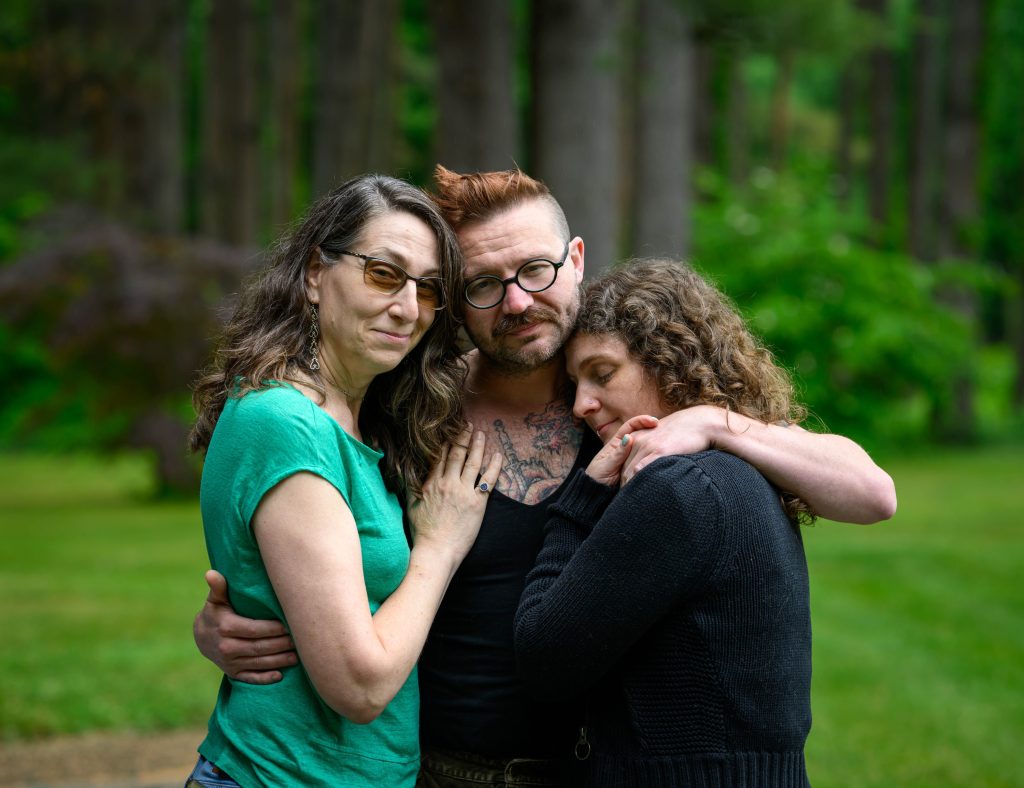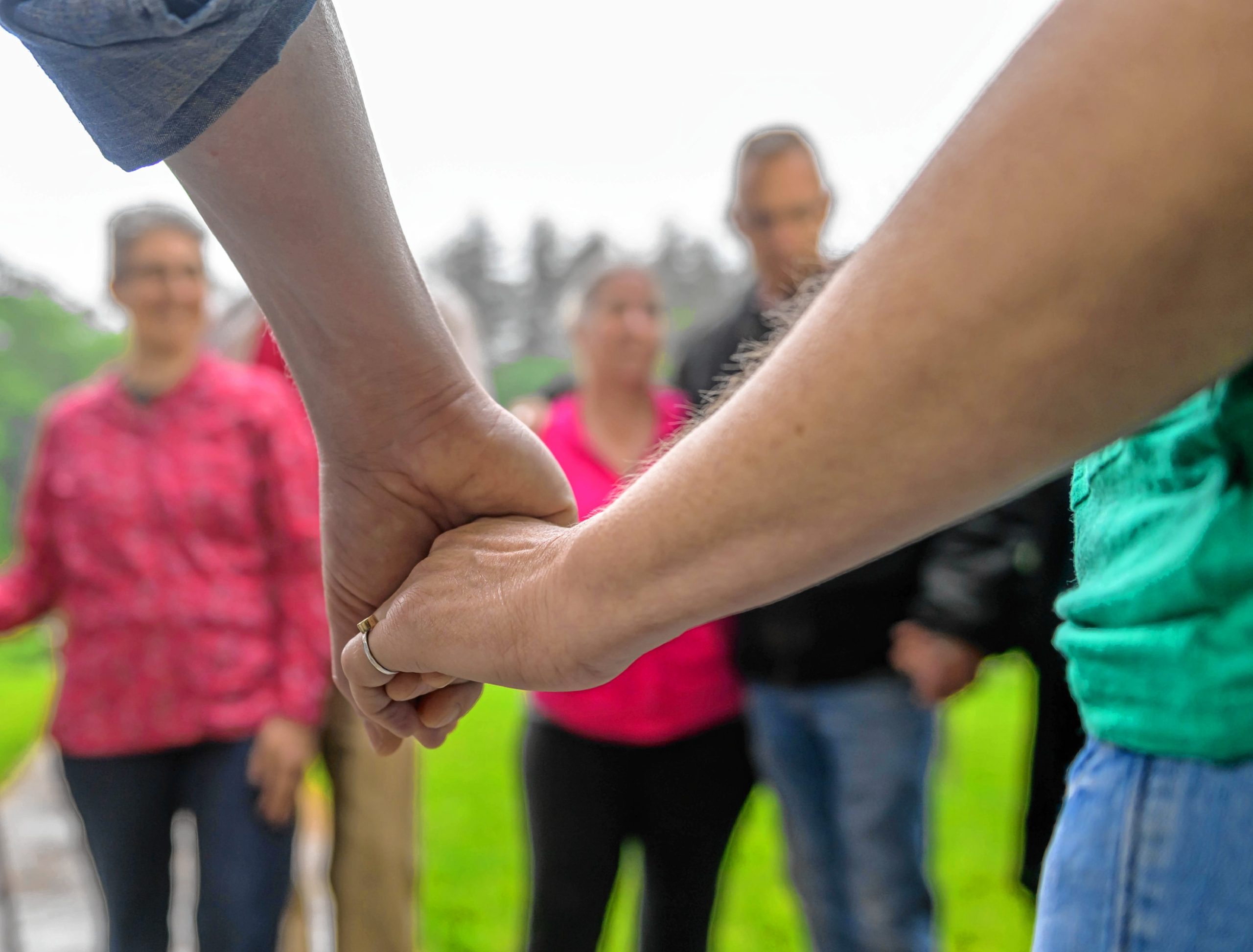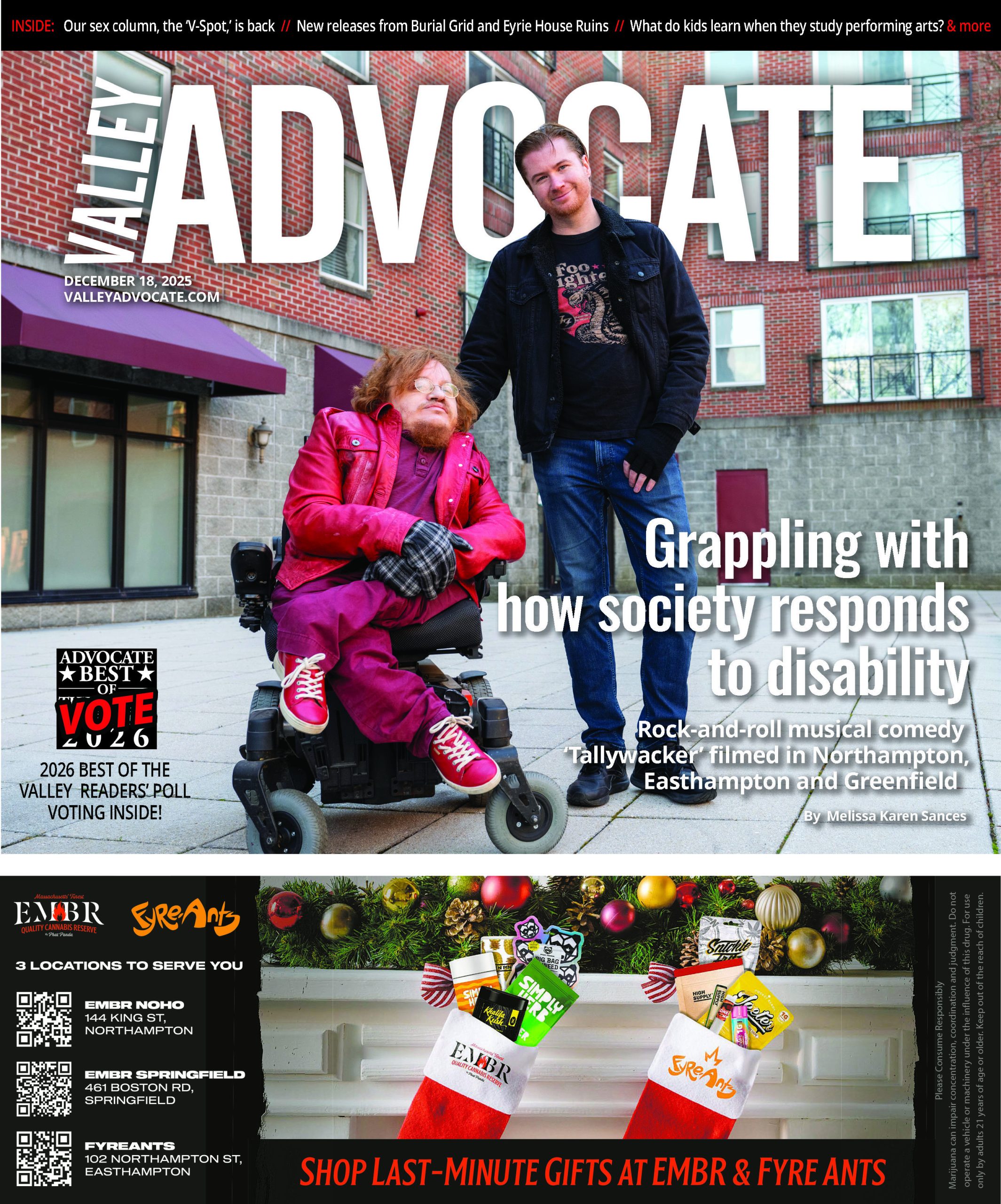By Melissa Karen Sances
For the Valley Advocate
“You know what goes on behind closed doors in a polyamorous household?” Fox asks, and I lean in closer. We’re on the phone and he is 800 miles away, so I am leaning toward — nothing. I am on the precipice of something, I know I am, but all I can see is my broken phone screen over a black background, his name, white like sunlight, filtered through the cracks.
“What?” I ask, as the seconds tick by. “What goes on?”
“Board games,” the 45-year-old says with a laugh. “Like Dungeons & Dragons. A polycule makes for a readymade D&D group. I’ve never run across the bacchanalias that conservative folks are worried about, because our life revolves around board games and Google Calendar. It’s soccer mom times 50.”
It sounds so … wholesome.
It also sounds familiar. In 15 interviews across 5 polycules, almost everyone will share that, for them, polyamory has very little to do with sex. And, a few days after my call with Fox, when representatives of each polycule gather for a photo shoot and join hands, I will be touched by their gentle circle, and I will see exactly what everyone has described: shared joy in shared love.
Let’s be real
But even in our liberal, queer-friendly Pioneer Valley, polyamory isn’t easy. Everyone who shared their story with me acknowledged a level of risk, from being “outed” to their family, workplace or community, to facing social or legal danger. Some chose to use pseudonyms or first names only to protect their privacy. I spoke with people from Springfield, Greenfield, Westfield, Chesterfield, Easthampton and Northampton, ranging in age from 29 to 55. I consulted with a therapist whose clientele is 80% non-monogamous and an expert witness whose own fear of polyamory drove her to research its benefits. Here are their stories.
Jenn, Sean, Patricia, Fox and John
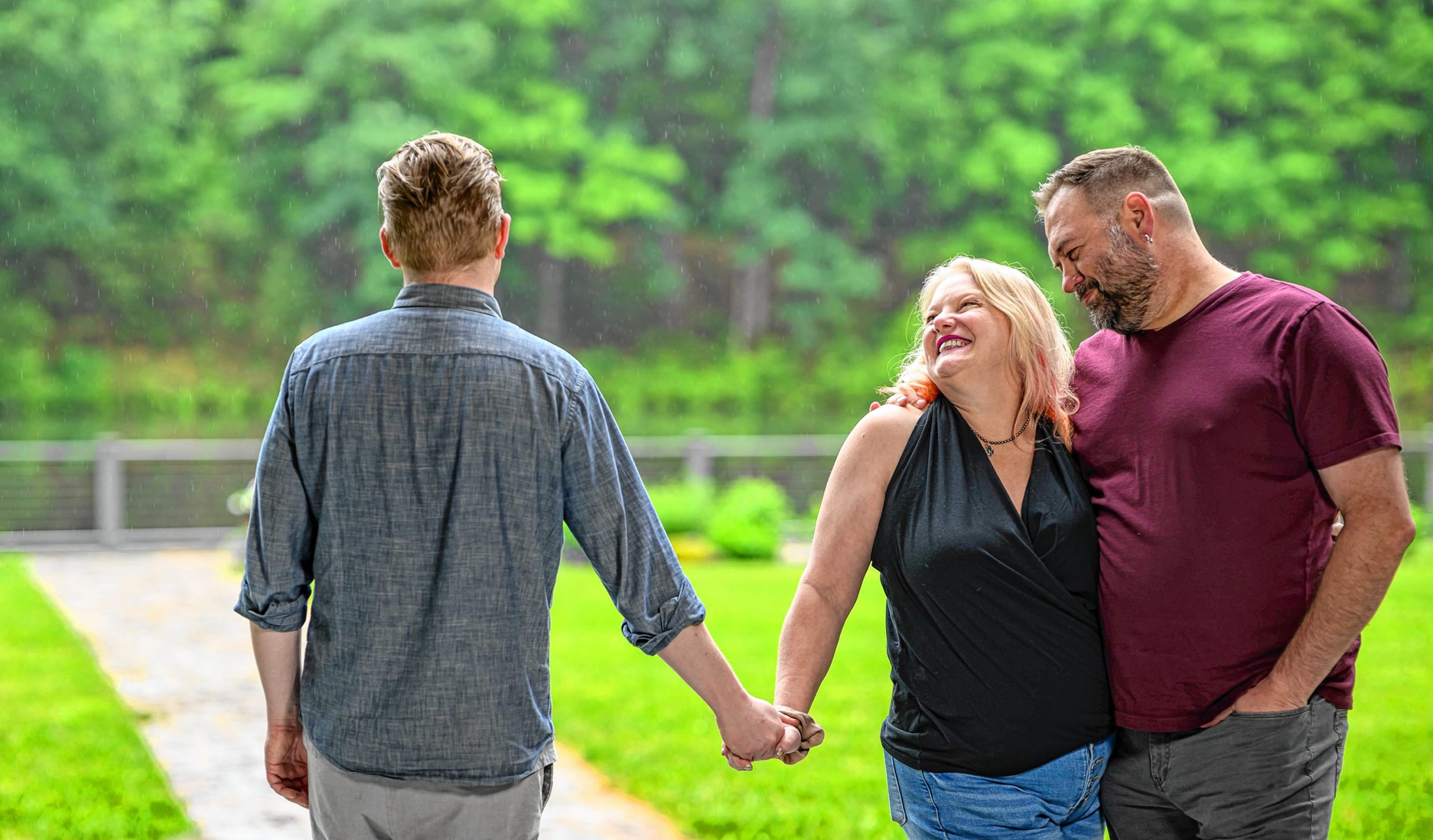
Photo by Christopher Evans
Polyamorous partners Jennifer Rahner, center, and Sean Rahner, right, with Jennifer’s boyfriend, left, in Northampton’s Look Park.
“Some people talk about polyamory as an orientation,” says Jennifer Rahner, 50, a sex educator who has practiced consensual non-monogamy (CNM) since her 20s. “But I don’t know one way or another. Even when I was dating in my teens, I didn’t understand why the minute I went out with a boy I belonged to him and couldn’t date anybody else. It didn’t feel like the culture permitted taking your relationships to whatever logical conclusion there was. And it seemed like sex was just an arbitrary line.”
Rahner has been married for 11 years to her husband Sean, 48, who she met when they were living in Georgia. At the time, Sean had a young daughter that the couple wanted to raise before opening up their relationship. Besides the risks posed to polyamorous adults, the threat to their children – being taken away, being targeted – was the reason many people chose not to use their full names in this article. Some, like Sean’s partner Patricia, were raised in conservative homes that did not support autonomy.
“When I was 4,” says Patricia, “I was playing house with Michelle and Jeff in Sunday school, and I kissed both of them goodbye because I was off to work. The next day I was in a prayer meeting to get the demons of homosexuality out of me. I was very confused, and I could hardly go to my local library and pull any books on polyamory.”
Now 49 with two young children, Patricia suggested that her polycule move to western Massachusetts last year largely to ensure her daughter’s freedom of choice.
Her partner, Sean Rahner, also grew up in the South, without representation of polyamory or homosexuality. “Back to when I was a late teenager, I would find myself attracted to multiple people, not just looks but personality as well,” he says. “And I had the question of ‘Why am I only allowed to be in love with one person at once?’”
Today he is in loving relationships with four people — Jenn, Patricia, and his partner Fox. “Authenticity has just become so vital to my well-being,” he says. “That was a huge reason why I came out — because I had been living these two lives for so many years and it was exhausting. I felt like an old man.”
Fox, who will be joining the polycule in Massachusetts posthaste, says that his first date with Sean had a youthful energy: “It was the most chaste, Hallmark movie thing you’ve ever seen!” Jenn and her daughter, now in her first year of college, were home when Sean and Fox returned from their outing. “Sean comes in and they are perched on the couch staring at the door like cats. Then Sean blushes and says, ‘I kissed a boy and I liked it.’” Everyone squealed.
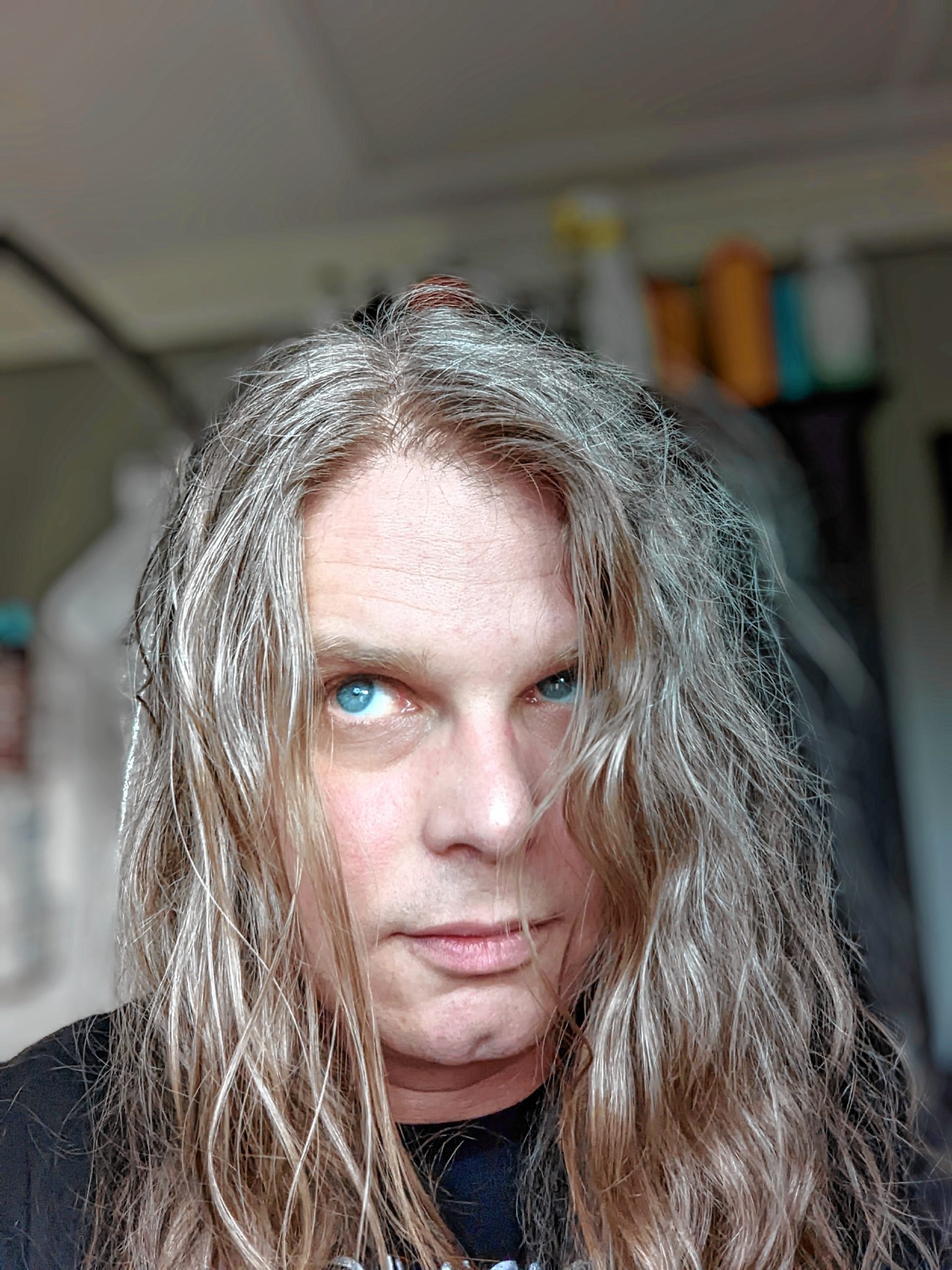
CONTRIBUTED
Fox, who will be joining his polycule in Massachusetts posthaste, says that his first date with Sean had a youthful energy: “It was the most chaste, Hallmark movie thing you’ve ever seen!”
The newest member of the polycule, John, met everyone but Fox during an equally tame encounter. “I was on the couch next to Jenn, Sean was on the couch next to Patricia, and no one felt weird, so I didn’t feel weird,” he says. “It was a great introduction into a community. It wasn’t just the four of us having a conversation about polyamory, it was just like, ‘Let’s have game night.’”
Dr. Elisabeth “Eli” Sheff
Thirty years ago, the world’s foremost expert on polyamory was dead set against it.
“I had a partner who wanted multiple partner relationships,” Sheff, who lives in Seattle, says, “and I thought that that meant I was too fat, or bad in bed, or not pretty enough. He kept saying, ‘That’s not it, I would feel this way no matter who I’m with,’ but I was freaked out.”
Her fears led her to seek out polyamory in community. She was shocked to find out that most poly folks didn’t feel the same way, and that in fact, their experience of jealousy had evolved into compersion, or the joy in seeing someone you love experience joy with someone else. “I was like, ‘Holy shit, tell me more.’”
As time went on, the sociologist realized that she wanted to tell the story of CNM from a researcher’s perspective — “so that it’s not scary anymore.”
In 2020 Sheff published the results of a 25-year longitudinal study on children in polyamorous families, in which she followed some young people from birth through college. “These kids have really strong communication skills,” she says, “as well as a sense of self in relationship to diverse others.” She has talked with freshmen in college who’ve been confronted with a roommate without boundaries, which gave them a newfound appreciation for their poly parents’ many clarifying family meetings.
Sheff, who has been called on as an expert witness in countless legal cases related to polyamory, points out that non-monogamy is considered by those who practice it to be “ethical,” hence the term “ethical non-monogamy,” but that legal challenges are often based in morality. A handful of laws to protect CNM families against discrimination have been passed in Oakland and Berkeley, California; as well as in Somerville, Cambridge and Arlington, Massachusetts. But no laws protect non-monogamous people from losing their livelihoods.
At-will employees can be fired for any reason management cites. If a job includes a morality clause — which applies anywhere from big-name chains like Chick-fil-A or Hobby Lobby to small private or religious schools — one’s sexual conduct can be considered a moral violation.
According to Sheff, about 20% of the North American population has tried some form of CNM and 5% of the population maintains an ongoing non-monogamous relationship. “It’s frightening for some people, like me,” she says. “Like what if my partner wants it, what if it becomes the norm? Which is pretty much where I started, and I went kind of full-circle to not being freaked out about it, to not being afraid of it, to seeing the amazing things it can provide for people.”
Polyamory, she has learned, helps people to inhabit themselves fully, “even a flirty part they would have to turn off in a monogamous relationship.” When people can follow their full potential, she says, that brings greater abundance to everyone they touch.
Tasha, Josie, Brook and Jay
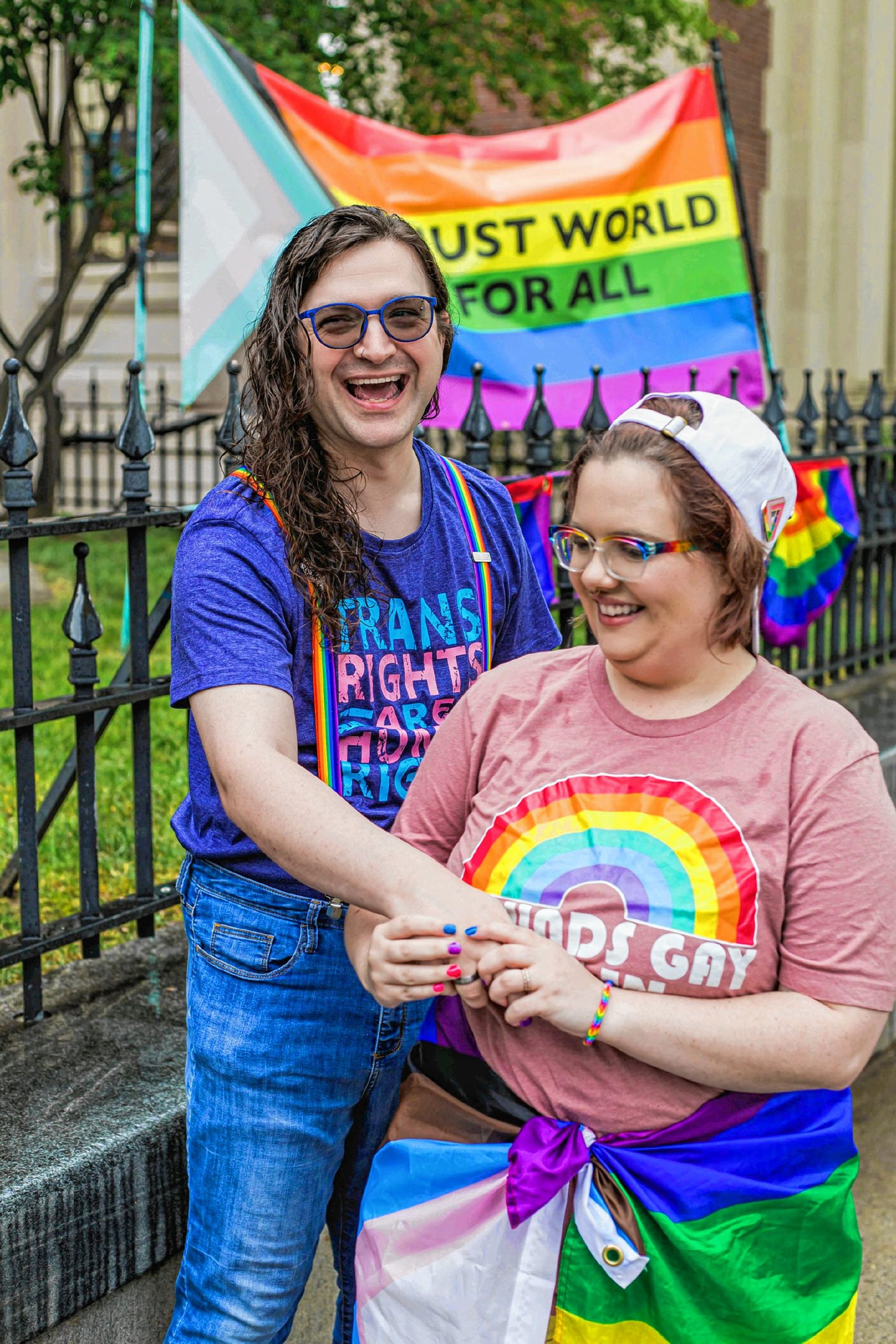
CONTRIBUTED
Josie and Tasha Metley at last year’s Hampshire Pride Fest. Metley, who is married to Josie, also has a relationship with Jimmy, who is married to Liv.
Tasha Metley, 30, loves that her child has a large, intentional family. Metley, who is married to Josie, 37, also has a relationship with Jimmy, who is married to Liv. As a result, Tasha and Josie’s child “has grown up knowing 4 parents: Mom and Dad — me and Josie — and Mama Liv and Daddy Jimmy.”
She thinks that one of the issues people have with CNM is that when they imagine multiple relationships, each iteration is based on an unhealthy ideal. Her spouse calls this “the ideal of ‘one true love.’”
“As much as we live in a liberal area,” says Josie Metley, “we’re still a nation based on puritanical ideals and those ideals are reinforced across the board – in commercials, on TV, in movies … This idea of ‘one true love’ is so ingrained in our society that to change that mindset requires a radical level of introspection.”
They are one of many who reference the reality that most people already love more than one person, be that more than one child, more than one parent, or more than one friend. “Each might be specific to an individual, but it’s still love and that doesn’t lessen it,” they say.
Brook, who is Josie’s metamour — or a partner of one of Josie’s partners — is married to Jay, whom she loves unconditionally, but not exclusively: “Jay is my best friend, the person who I love so much, my spouse. And also, I love other people, a lot, and I can be emotionally close and vulnerable with people and don’t have to worry that that’s going to hurt Jay somehow.”
The 29-year-olds have been together since college, and for Jay, CNM has always made sense. “I naturally trend toward seeing relationships as unique and incapable of being measured to ensure that my love is being correctly distributed,” explains Jay. “And so polyamory mostly just created a space, a language and a community to figure out the ways for that to feel good rather than abnormal or non-ideal.”
LC, Ryan and Erin
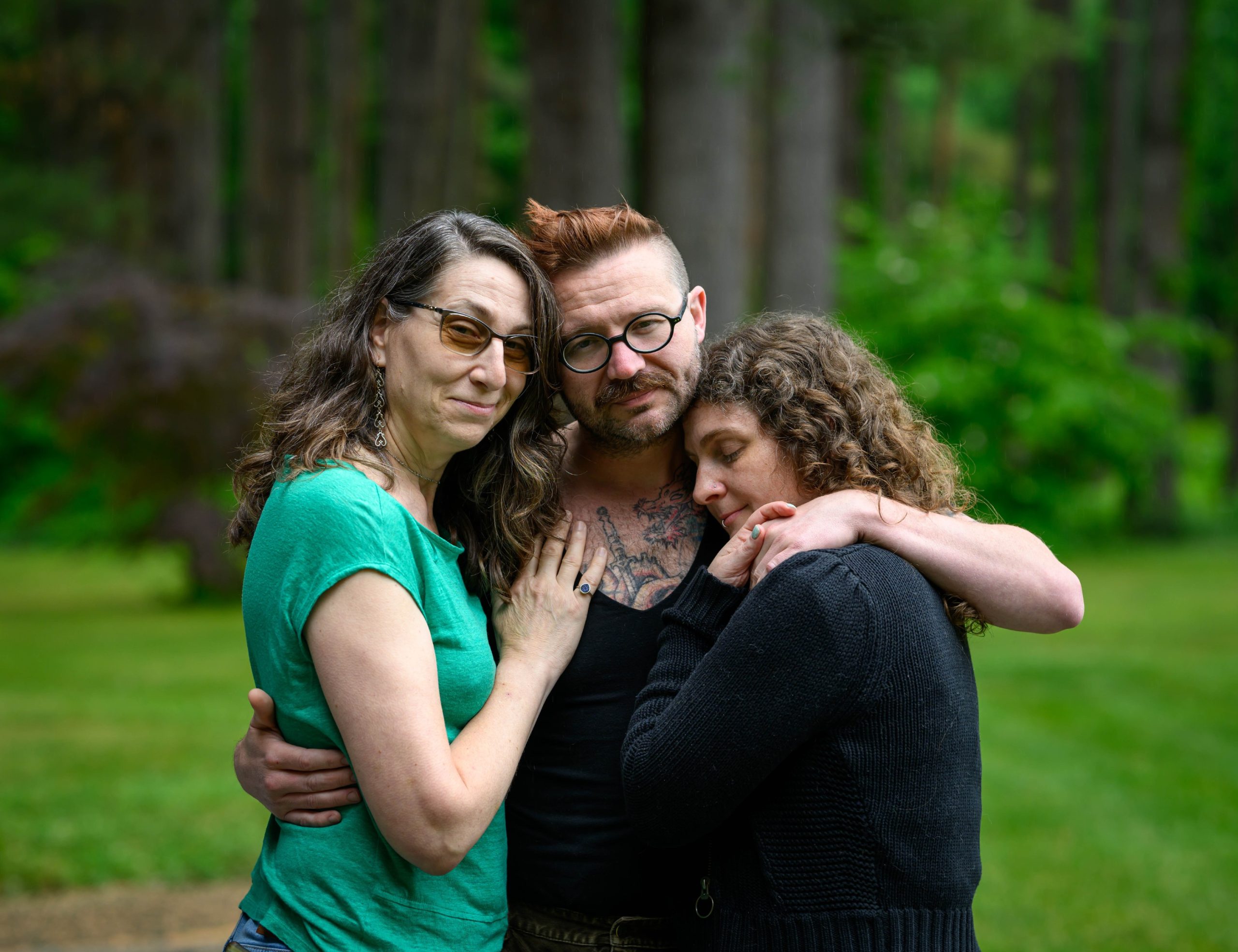
Photo by Christopher Evans
Polyamorous partners LC, Ryan and Erin embrace in Northampton’s Look Park.
Like many people I interviewed, until two friends of hers came out as poly, LC didn’t have the language to even consider it. “I was in serious monogamous relationships over the course of my life, but I never felt like they were good enough. I felt stuck. It wasn’t like I was sitting there thinking to myself, ‘Oh, I wish I could see other people.’ It just didn’t feel good.”
LC, 53, is one of the people responsible for running Western Mass Polyamory, a private online group whose membership tops 300. The group holds a monthly social for a range of new and long-term members.
“I feel like polyamory helps me to be authentic with people,” she explains. “I can form organic relationships with whoever I want and I also have this amazing circle of people around me who want me to be my best self.”
That said, she is not pushing polyamory on anybody, and CNM is not a criticism of monogamy. “It’s not like everyone has to do this,” says LC. “It’s not better or worse — it’s just different.”
Her partner Ryan, 39, is all-for authenticity, but until recently their long-term work with the federal government had made them feel unsafe exploring fundamental questions, like Who am I? and What do I want?
“It’s scary as [expletive],” they say, “doing all the work to connect with the people you want to connect with.”
Even though they now believe in sharing their truth, they wonder how it will be received. “Is this the thing that says I’m done with social media?” they ask “Is this the article that says that people no longer trust me to do the job I’ve been doing for a decade, that I’m no longer qualified because they don’t understand the rest of the things in my life?
“Being vulnerable is handing other people the tools of your destruction and trusting them not to use them. It comes at a cost emotionally.”
Gus and Nellie
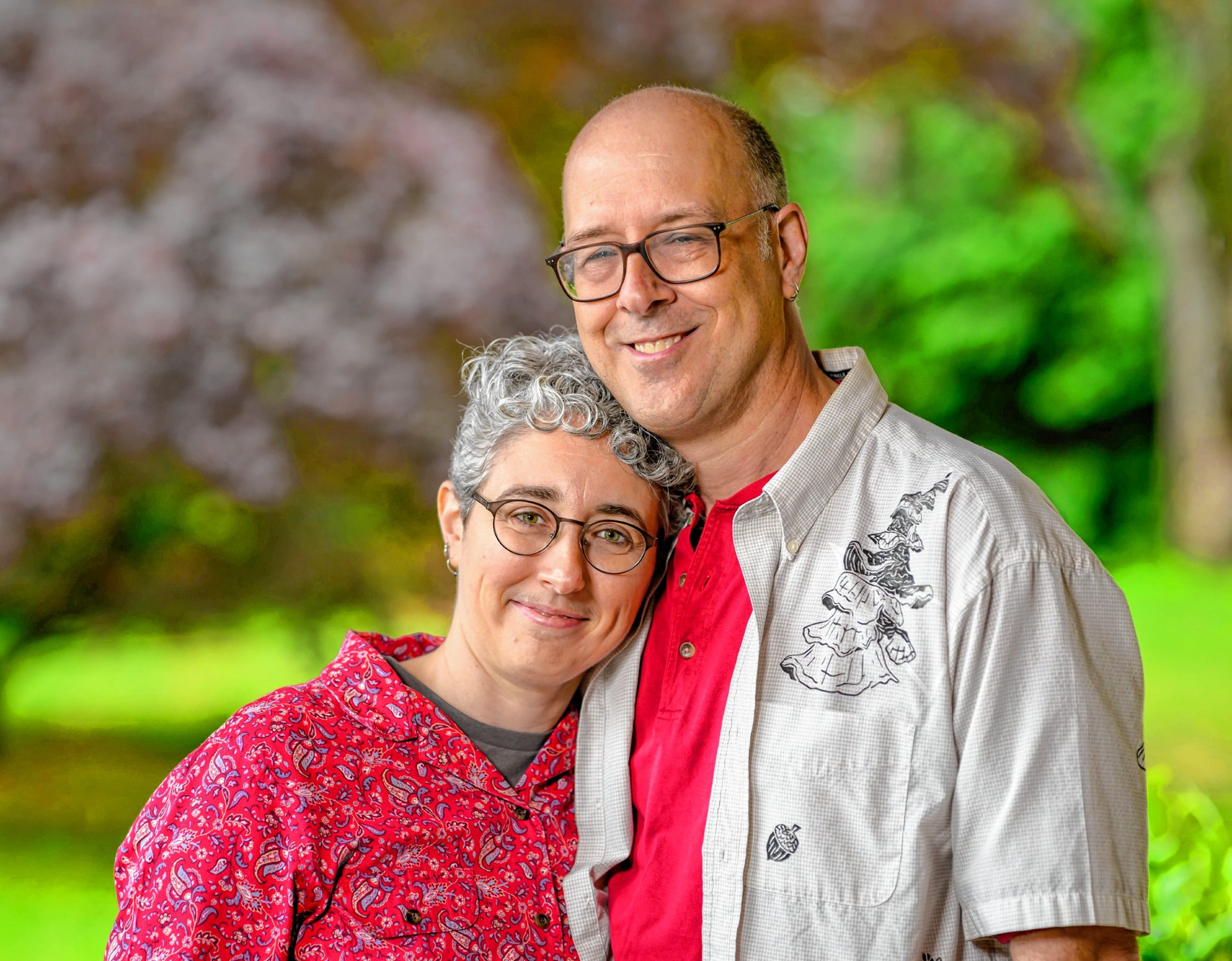
Photo by Christopher Evans
Nellie Wilson, left, and Gus Perkins pose for a photograph in Northampton’s Look Park.
“I think coming out and saying, ‘I live next door to you and this is my experience, and this is why there’s often three cars in the driveway’ can be a little in-your-face as opposed to, everyone can see three cars in the driveway and pretend they don’t know or don’t care,” says Gus Perkins, 55. “It would be lovely if we could all be who we are and live how we are.”
For him, polyamory emerged as a possibility when challenges in his marriage brought him and his wife to couple’s therapy, where they considered opening the relationship as an alternative to divorce. Ultimately, the marriage ended amicably, and seven years ago he met his partner, Nellie Wilson, a professional cuddlist and practitioner of communication and consent.
“It was helpful to have my first poly relationship with someone who had so much experience in the community,” he says. “It was like going to a foreign country with a native language speaker.”
Wilson feels like her work intersects with her lifestyle in such a way that she is always learning how to better communicate. “If we see representations of polyamory in the media,” she says, “it’s sometimes glorified as, ‘Look at all these promiscuous people having this fancy life.’” (This was the recent take of the New Yorker and The Atlantic, but among the people I interviewed, no one was living large. And despite New York Magazine’s confounding, cat-covered polyamory issue, no one was hissing at each other, either. Meow!)
Ultimately, says Wilson, “When you have multiple people in loving connection with each other, you really want to be mindful and intentional about how you’re engaging with your partners or your metamours. Polyamory is fundamentally about loving and caring for other people.”
Yana Tallon-Hicks
The former poly columnist for the Advocate practices relationship therapy in Brattleboro, Vermont, where, she says, it’s impossible to walk down the street without running into someone non-monogamous. Many clients come to Tallon-Hicks wanting to explore CNM or discuss what might not be working in their polyamorous relationships. “I hear from a lot of clients that it’s really important to trust that the person working with them isn’t automatically attributing their polyamory to something being wrong,” she says.
“If a monogamous couple comes in and says, ‘We have this problem. We’re just not communicating very well,’ the solution isn’t, ‘Well, if you weren’t monogamous, the problem wouldn’t exist.’ My personal stance is that I think polyamory makes sense and I think monogamy makes sense. The point is that you get to pick what you want to do.”
Sarah and Sascha
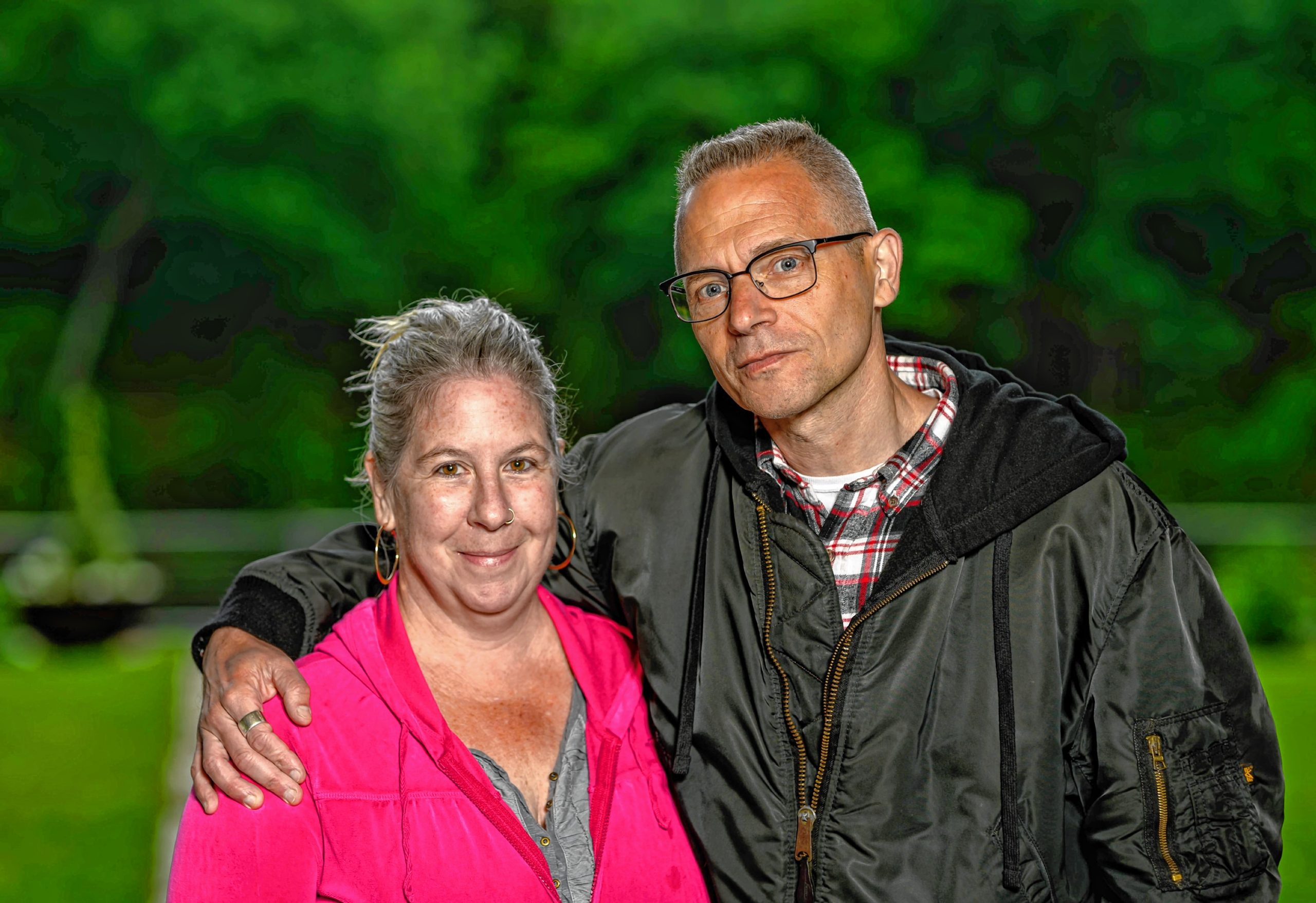
Photo by Christopher Evans
Sarah M. Hougen, left, and Sascha Gottschalk pose for a photograph in Northampton’s Look Park.
In 1975 in Orange, Sarah M. Hougen’s parents came out. Her dad was a gay minister who had longstanding boyfriends that would live and go on vacation with the whole family. Her mom dated her own boyfriends more quietly. The AIDS epidemic was on the horizon, and Orange was hardly queer-friendly.
“When they first came out, a lot of people weren’t okay with him being gay,” says Hougen. “But the bigger problem was that they stayed married and slept with other people.” She remembers moving from western Massachusetts to an apartment in Boston, where looters smashed the windows and chased them out. They settled in nearby Jamaica Plain, and Hougen grew up certain that those who found fault with her parents’ way of life were the ones in the wrong. “‘It wasn’t like I thought, ‘I don’t want my family to be the way it is.’ I didn’t want other people to be prejudiced.”
Today, Hougen, 54, practices a polyamorous lifestyle and wants to follow in her now-deceased parents’ footsteps. “I want to be fair to people,” she says. “I want to be a support. Whatever their job aspirations are and their sex aspirations are, I put them on the same plane.”
Hougen’s partner of 7 years, Sascha Gottshcalk, 54, once had the opposite take on polyamory. “When I first heard about it, I thought it was weird,” he says. “It didn’t sound right to me at all.” But after spending time in a long-term monogamous relationship in which he felt subsumed, he explored polyamory as a way to have more space for himself emotionally and sexually.
This has allowed him to be faithful to those he loves and free to explore what love means to him. “Polyamorous relationships are like any other relationships,” he says. “They have their ups and downs, their good communication, their bad communication, their romantic times, their time doing the laundry together — it’s really not as exotic as people think.”
I stare at my black iPhone 7 and disconnect the call. When I turn it over and examine the multicolored case, it assures me, somehow, that nothing is black-and-white, that in between lies promise and danger, and that there is something beautiful about a smudged but sturdy rainbow.
Melissa Karen Sances lives in western Mass, where she’s working on a memoir and writing features about extraordinary people. Reach her at melissaksances@gmail.com.

